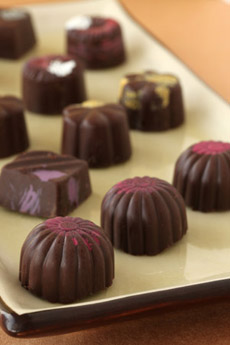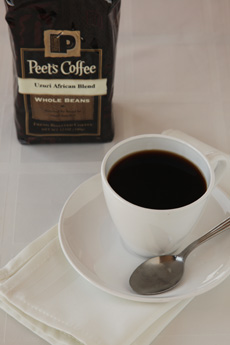
Each piece is infused with a different spice.
Photo by Jerry Deutsch | THE NIBBLE. |
|
Allow us to introduce you to “solid bonbons.” Wait, you say: Isn’t a “solid bonbon”* just a piece of solid chocolate?
*A bonbon is a hard shell of chocolate filled with a variety of centers—caramel, cremes, ganache, etc.
Not exactly. It is true that more than a few boxes of traditional filled bonbons will include a piece of solid chocolate molded into a coin, a flower or other shape. But we think that Spice Rack Chocolate of Fredericksburg, Virginia, has created a new variation, neither classic bonbon nor classic solid chocolate.
The chocolatiers have married the spice cabinet (and the liquor cabinet, and a few other kitchen cabinets) to solid semisweet chocolate (54% cacao), creating 30 different flavors of solid “spiced” chocolate in pretty molded shapes. They’re not bonbons or plain solid chocolate: They’re (in our designation) solid bonbons!
In the hands of Spice Rack Chocolates, solid chocolate is flavored with coffee, favorite kitchen spices (basil, rosemary), hot spices (chile, wasabi), spiced fruits, spirits (Cognac, rum) and tea. There are six collections, focusing on each of these themes. |
| There’s a bonus to “solid bonbons”—no cholesterol from buttery caramel, creme centers or ganache.
And there’s no Forrest Gumpian uncertainty, because there are five different flavors in each box, and each is color-coded.
These are a find for chocolate lovers who like to explore flavors, and for people who need to give gifts to them.
|




